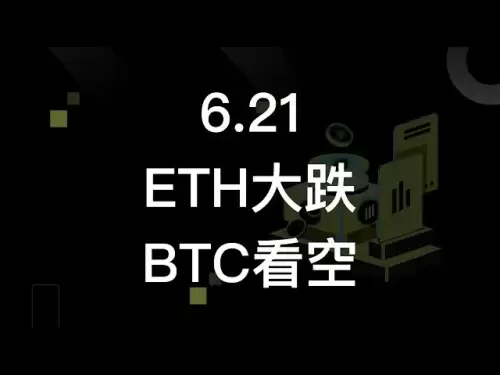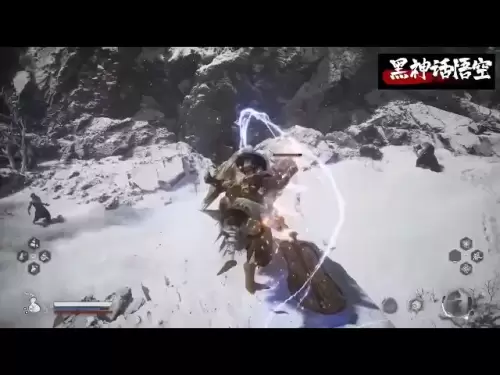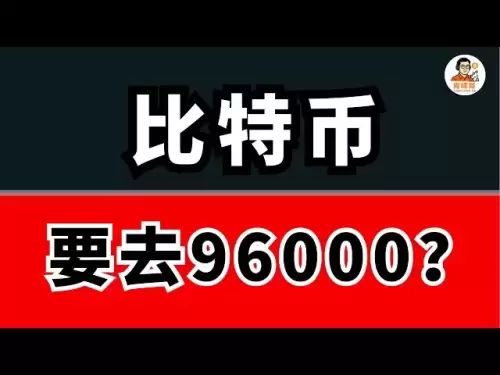-
 Bitcoin
Bitcoin $106,754.6083
1.33% -
 Ethereum
Ethereum $2,625.8249
3.80% -
 Tether USDt
Tether USDt $1.0001
-0.03% -
 XRP
XRP $2.1891
1.67% -
 BNB
BNB $654.5220
0.66% -
 Solana
Solana $156.9428
7.28% -
 USDC
USDC $0.9998
0.00% -
 Dogecoin
Dogecoin $0.1780
1.14% -
 TRON
TRON $0.2706
-0.16% -
 Cardano
Cardano $0.6470
2.77% -
 Hyperliquid
Hyperliquid $44.6467
10.24% -
 Sui
Sui $3.1128
3.86% -
 Bitcoin Cash
Bitcoin Cash $455.7646
3.00% -
 Chainlink
Chainlink $13.6858
4.08% -
 UNUS SED LEO
UNUS SED LEO $9.2682
0.21% -
 Avalanche
Avalanche $19.7433
3.79% -
 Stellar
Stellar $0.2616
1.64% -
 Toncoin
Toncoin $3.0222
2.19% -
 Shiba Inu
Shiba Inu $0.0...01220
1.49% -
 Hedera
Hedera $0.1580
2.75% -
 Litecoin
Litecoin $87.4964
2.29% -
 Polkadot
Polkadot $3.8958
3.05% -
 Ethena USDe
Ethena USDe $1.0000
-0.04% -
 Monero
Monero $317.2263
0.26% -
 Bitget Token
Bitget Token $4.5985
1.68% -
 Dai
Dai $0.9999
0.00% -
 Pepe
Pepe $0.0...01140
2.44% -
 Uniswap
Uniswap $7.6065
5.29% -
 Pi
Pi $0.6042
-2.00% -
 Aave
Aave $289.6343
6.02%
Is RSI dangerous when it is continuously overbought? Can you leave the market early by combining with the K-line reversal pattern?
A continuously overbought RSI can mislead traders, but combining it with K-line reversal patterns may help exit the market early and avoid potential losses.
May 29, 2025 at 11:35 am
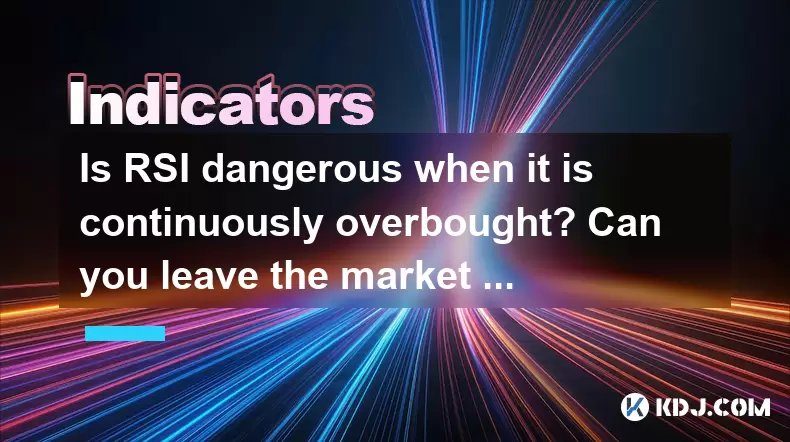
The Relative Strength Index (RSI) is a popular momentum oscillator used in technical analysis to measure the speed and change of price movements of a security. It is often used to identify overbought or oversold conditions in the market. However, when the RSI remains continuously overbought, it raises questions about its reliability and potential dangers. This article will explore whether an RSI in a prolonged overbought state is dangerous and if combining it with K-line reversal patterns can help traders exit the market early.
Understanding RSI and Overbought Conditions
The RSI is calculated based on the average gains and losses of a security over a specific period, typically 14 days. The index oscillates between 0 and 100, with readings above 70 indicating an overbought condition and readings below 30 indicating an oversold condition. When the RSI remains above 70 for an extended period, it suggests that the asset might be overvalued and could be due for a correction.
Dangers of a Continuously Overbought RSI
A continuously overbought RSI can be misleading for traders. It might suggest that a correction is imminent, but in strong bullish markets, the RSI can remain overbought for extended periods without a significant price drop. This can lead to false signals and cause traders to exit positions prematurely, missing out on potential gains. Additionally, if traders consistently act on overbought signals without considering other factors, they might experience whipsaws—rapid price movements that can result in losses.
Combining RSI with K-line Reversal Patterns
To mitigate the risks associated with a continuously overbought RSI, traders often combine it with other technical indicators, such as K-line reversal patterns. K-line patterns, also known as candlestick patterns, provide visual cues about potential trend reversals. By integrating RSI readings with these patterns, traders can gain a more comprehensive view of market conditions and make more informed decisions about exiting the market.
Identifying K-line Reversal Patterns
K-line reversal patterns can be identified through various formations, such as the Doji, Hammer, Shooting Star, and Engulfing patterns. Each of these patterns signals different potential reversal scenarios. For instance, a Doji pattern, characterized by a small body and long wicks, indicates market indecision and could signal an impending reversal. A Hammer pattern, with a small body and a long lower wick, suggests that sellers pushed the price down, but buyers managed to push it back up, indicating potential bullish reversal.
Using RSI and K-line Patterns for Early Exits
To use RSI and K-line reversal patterns for early exits, traders should follow these steps:
- Monitor RSI: Keep an eye on the RSI to identify when it enters and remains in the overbought territory (above 70).
- Identify K-line Patterns: Look for bearish reversal patterns such as Shooting Stars, Bearish Engulfing, or Dark Cloud Cover on the K-line chart.
- Confirm Signals: Wait for a bearish K-line pattern to form while the RSI is overbought. This confluence of signals increases the likelihood of a price reversal.
- Exit Strategy: Once both signals are confirmed, consider exiting the market or reducing your position to mitigate potential losses.
Practical Example of Combining RSI and K-line Patterns
Let's consider a practical example of how to use these indicators together. Suppose you are holding a position in Bitcoin, and the RSI has been consistently above 70 for the past week. You notice a Shooting Star pattern forming on the daily chart. This pattern, characterized by a small body and a long upper wick, suggests that buyers pushed the price up, but sellers managed to push it back down, indicating potential bearish reversal.
- Step 1: Confirm that the RSI is still overbought.
- Step 2: Identify the Shooting Star pattern on the K-line chart.
- Step 3: Wait for the next candle to confirm the bearish reversal by closing lower than the Shooting Star's body.
- Step 4: If the bearish reversal is confirmed, consider exiting your position to avoid potential losses.
Risks and Limitations of This Strategy
While combining RSI with K-line reversal patterns can provide valuable insights, it is not foolproof. Markets can remain irrational longer than traders can remain solvent, and false signals are always a risk. Additionally, this strategy relies on the assumption that the RSI and K-line patterns will accurately predict market movements, which is not always the case. Traders should always use risk management techniques, such as setting stop-loss orders, to protect their capital.
Frequently Asked Questions
Q1: Can the RSI remain overbought indefinitely without a price correction?
A1: Yes, in strong bullish markets, the RSI can remain overbought for extended periods without a significant price correction. This is often seen during strong uptrends where buying pressure continues to drive prices higher despite overbought conditions.
Q2: Are there other indicators that can be combined with RSI and K-line patterns for better accuracy?
A2: Yes, other indicators such as the Moving Average Convergence Divergence (MACD), Bollinger Bands, and Fibonacci retracement levels can be combined with RSI and K-line patterns to enhance the accuracy of trading signals. Each of these indicators provides additional insights into market trends and potential reversal points.
Q3: How can I avoid false signals when using RSI and K-line patterns?
A3: To avoid false signals, it's crucial to use multiple timeframes for confirmation, employ other technical indicators for cross-verification, and maintain a disciplined approach to risk management. Setting clear entry and exit rules based on a combination of indicators can help reduce the impact of false signals.
Q4: Is it necessary to use both RSI and K-line patterns, or can I rely on one alone?
A4: While it's possible to trade using either RSI or K-line patterns alone, combining them provides a more robust trading strategy. RSI helps identify overbought and oversold conditions, while K-line patterns offer visual cues for potential reversals. Using both together increases the probability of making accurate trading decisions.
Disclaimer:info@kdj.com
The information provided is not trading advice. kdj.com does not assume any responsibility for any investments made based on the information provided in this article. Cryptocurrencies are highly volatile and it is highly recommended that you invest with caution after thorough research!
If you believe that the content used on this website infringes your copyright, please contact us immediately (info@kdj.com) and we will delete it promptly.
- BNB Price Eyes $730 Target After ATH Rally Attempt
- 2025-06-21 16:25:12
- XRP Price: Market Breakout Imminent? Analyzing the Predictions
- 2025-06-21 16:25:12
- Shiba Inu, Cryptocurrency, and Investment: Beyond the Hype
- 2025-06-21 16:30:11
- AI Token Showdown: Can Ruvi AI Outpace Cardano to $1?
- 2025-06-21 16:45:11
- AI Token Race: Can Ruvi AI Outpace Cardano to the $1 Target?
- 2025-06-21 16:45:11
- Brand Ownership Redefined: Alki David's Crypto Revolution
- 2025-06-21 17:05:12
Related knowledge

Does the sudden contraction of ATR indicate the end of the trend?
Jun 20,2025 at 11:14pm
Understanding ATR and Its Role in Technical AnalysisThe Average True Range (ATR) is a technical indicator used to measure market volatility. Developed by J. Welles Wilder, ATR calculates the average range of price movement over a specified period, typically 14 periods. It does not indicate direction—only volatility. Traders use ATR to gauge how much an ...

Is it invalid if the DMI crosses but the ADX does not expand?
Jun 21,2025 at 09:35am
Understanding the DMI and ADX RelationshipIn technical analysis, the Directional Movement Index (DMI) consists of two lines: +DI (Positive Directional Indicator) and -DI (Negative Directional Indicator). These indicators are used to determine the direction of a trend. When +DI crosses above -DI, it is often interpreted as a bullish signal, while the opp...

Is the trend continuation when the Williams indicator is oversold but there is no rebound?
Jun 20,2025 at 11:42pm
Understanding the Williams %R IndicatorThe Williams %R indicator, also known as the Williams Percent Range, is a momentum oscillator used in technical analysis to identify overbought and oversold levels in price movements. It typically ranges from 0 to -100, where values above -20 are considered overbought and values below -80 are considered oversold. T...
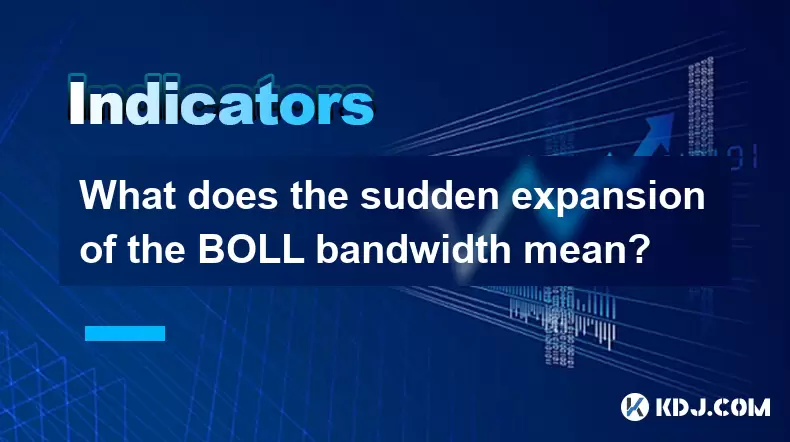
What does the sudden expansion of the BOLL bandwidth mean?
Jun 21,2025 at 01:49pm
Understanding the BOLL IndicatorThe BOLL (Bollinger Bands) indicator is a widely used technical analysis tool in cryptocurrency trading. It consists of three lines: a simple moving average (SMA) in the center, with upper and lower bands calculated based on standard deviations from that SMA. These bands dynamically adjust to price volatility. When trader...

Is the golden cross of the ROC indicator below the zero axis effective?
Jun 20,2025 at 09:42pm
Understanding the ROC Indicator and Its Role in Cryptocurrency TradingThe Rate of Change (ROC) indicator is a momentum oscillator widely used by traders to assess the speed at which cryptocurrency prices are changing. It measures the percentage difference between the current price and the price from a certain number of periods ago. The ROC helps identif...
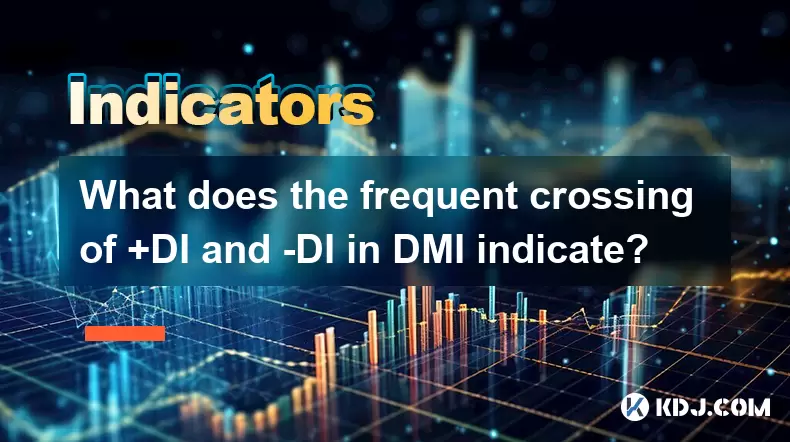
What does the frequent crossing of +DI and -DI in DMI indicate?
Jun 21,2025 at 05:14pm
Understanding the DMI and Its ComponentsThe Directional Movement Index (DMI) is a technical analysis tool used to identify the strength and direction of a trend. It consists of two lines: +DI (Positive Directional Indicator) and -DI (Negative Directional Indicator), along with the ADX (Average Directional Index) line which measures trend strength. In cr...

Does the sudden contraction of ATR indicate the end of the trend?
Jun 20,2025 at 11:14pm
Understanding ATR and Its Role in Technical AnalysisThe Average True Range (ATR) is a technical indicator used to measure market volatility. Developed by J. Welles Wilder, ATR calculates the average range of price movement over a specified period, typically 14 periods. It does not indicate direction—only volatility. Traders use ATR to gauge how much an ...

Is it invalid if the DMI crosses but the ADX does not expand?
Jun 21,2025 at 09:35am
Understanding the DMI and ADX RelationshipIn technical analysis, the Directional Movement Index (DMI) consists of two lines: +DI (Positive Directional Indicator) and -DI (Negative Directional Indicator). These indicators are used to determine the direction of a trend. When +DI crosses above -DI, it is often interpreted as a bullish signal, while the opp...

Is the trend continuation when the Williams indicator is oversold but there is no rebound?
Jun 20,2025 at 11:42pm
Understanding the Williams %R IndicatorThe Williams %R indicator, also known as the Williams Percent Range, is a momentum oscillator used in technical analysis to identify overbought and oversold levels in price movements. It typically ranges from 0 to -100, where values above -20 are considered overbought and values below -80 are considered oversold. T...

What does the sudden expansion of the BOLL bandwidth mean?
Jun 21,2025 at 01:49pm
Understanding the BOLL IndicatorThe BOLL (Bollinger Bands) indicator is a widely used technical analysis tool in cryptocurrency trading. It consists of three lines: a simple moving average (SMA) in the center, with upper and lower bands calculated based on standard deviations from that SMA. These bands dynamically adjust to price volatility. When trader...

Is the golden cross of the ROC indicator below the zero axis effective?
Jun 20,2025 at 09:42pm
Understanding the ROC Indicator and Its Role in Cryptocurrency TradingThe Rate of Change (ROC) indicator is a momentum oscillator widely used by traders to assess the speed at which cryptocurrency prices are changing. It measures the percentage difference between the current price and the price from a certain number of periods ago. The ROC helps identif...

What does the frequent crossing of +DI and -DI in DMI indicate?
Jun 21,2025 at 05:14pm
Understanding the DMI and Its ComponentsThe Directional Movement Index (DMI) is a technical analysis tool used to identify the strength and direction of a trend. It consists of two lines: +DI (Positive Directional Indicator) and -DI (Negative Directional Indicator), along with the ADX (Average Directional Index) line which measures trend strength. In cr...
See all articles























